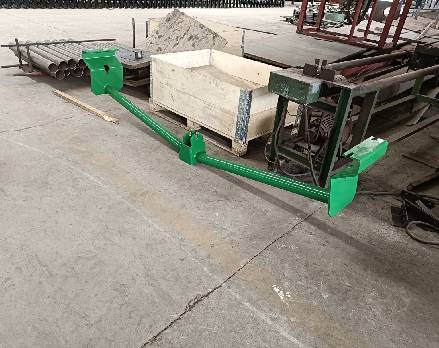 Afrikaans
Afrikaans  Albanian
Albanian  Amharic
Amharic  Arabic
Arabic  Armenian
Armenian  Azerbaijani
Azerbaijani  Basque
Basque  Belarusian
Belarusian  Bengali
Bengali  Bosnian
Bosnian  Bulgarian
Bulgarian  Catalan
Catalan  Cebuano
Cebuano  Corsican
Corsican  Croatian
Croatian  Czech
Czech  Danish
Danish  Dutch
Dutch  English
English  Esperanto
Esperanto  Estonian
Estonian  Finnish
Finnish  French
French  Frisian
Frisian  Galician
Galician  Georgian
Georgian  German
German  Greek
Greek  Gujarati
Gujarati  Haitian Creole
Haitian Creole  hausa
hausa  hawaiian
hawaiian  Hebrew
Hebrew  Hindi
Hindi  Miao
Miao  Hungarian
Hungarian  Icelandic
Icelandic  igbo
igbo  Indonesian
Indonesian  irish
irish  Italian
Italian  Japanese
Japanese  Javanese
Javanese  Kannada
Kannada  kazakh
kazakh  Khmer
Khmer  Rwandese
Rwandese  Korean
Korean  Kurdish
Kurdish  Kyrgyz
Kyrgyz  Lao
Lao  Latin
Latin  Latvian
Latvian  Lithuanian
Lithuanian  Luxembourgish
Luxembourgish  Macedonian
Macedonian  Malgashi
Malgashi  Malay
Malay  Malayalam
Malayalam  Maltese
Maltese  Maori
Maori  Marathi
Marathi  Mongolian
Mongolian  Myanmar
Myanmar  Nepali
Nepali  Norwegian
Norwegian  Norwegian
Norwegian  Occitan
Occitan  Pashto
Pashto  Persian
Persian  Polish
Polish  Portuguese
Portuguese  Punjabi
Punjabi  Romanian
Romanian  Russian
Russian  Samoan
Samoan  Scottish Gaelic
Scottish Gaelic  Serbian
Serbian  Sesotho
Sesotho  Shona
Shona  Sindhi
Sindhi  Sinhala
Sinhala  Slovak
Slovak  Slovenian
Slovenian  Somali
Somali  Spanish
Spanish  Sundanese
Sundanese  Swahili
Swahili  Swedish
Swedish  Tagalog
Tagalog  Tajik
Tajik  Tamil
Tamil  Tatar
Tatar  Telugu
Telugu  Thai
Thai  Turkish
Turkish  Turkmen
Turkmen  Ukrainian
Ukrainian  Urdu
Urdu  Uighur
Uighur  Uzbek
Uzbek  Vietnamese
Vietnamese  Welsh
Welsh  Bantu
Bantu  Yiddish
Yiddish  Yoruba
Yoruba  Zulu
Zulu Understanding Conveyor Belt Idlers for Enhanced Material Handling Efficiency
Understanding Conveyor Belt Idlers Essential Components for Efficient Material Handling
Conveyor systems are ubiquitous in various industries, playing a crucial role in material handling. One of the essential components of these systems is the conveyor belt idler. Idlers are integral to the functionality and efficiency of conveyor belts, serving multiple purposes that enhance the overall performance of the conveyor system.
What are Conveyor Belt Idlers?
Conveyor belt idlers are rolls or rollers that support the weight of the conveyor belt and the materials being transported. They are typically placed at regular intervals along the conveyor system to maintain proper belt alignment and facilitate smooth movement. Idlers are designed to reduce friction between the belt and its supporting framework, thereby minimizing wear and tear on both the belt and the conveyor structure.
Types of Conveyor Belt Idlers
There are several types of idlers, each designed for specific functions and applications
1. Carrying Idlers These are the most common type and are used to support the weight of the material on the conveyor belt. They are typically found in the central section of the conveyor and are designed to provide the necessary support for maximum load.
2. Return Idlers Positioned on the return side of the conveyor belt, these idlers support the belt as it comes back to the loading point. They help keep the belt aligned and prevent sagging.
conveyor belt idlers

3. Impact Idlers Designed to absorb the impact of heavy loads, these idlers are typically installed at loading points where materials are dropped onto the belt from a height. They help mitigate damage to the belt and other components.
4. Training Idlers These are used to ensure proper alignment of the conveyor belt throughout its operation. Misalignment can lead to increased wear and operational inefficiencies, making training idlers crucial for maintaining belt stability.
Importance of Idler Selection
Choosing the right idler for a specific application is critical for the overall success of the conveyor system. Factors such as load capacity, belt speed, and the type of materials being transported must all be considered. Properly selected idlers enhance the longevity of the conveyor system, reduce maintenance costs, and improve operational efficiency.
Maintenance Considerations
Regular maintenance of idlers is essential for uninterrupted conveyor operation. This includes checking for wear, misalignment, and proper lubrication. Neglected idlers can lead to increased operational costs due to breakdowns and damage to the conveyor belt and other components. Implementing a routine inspection schedule can help identify issues before they escalate.
Conclusion
In summary, conveyor belt idlers are critical components that contribute to the efficiency and longevity of conveyor systems. Understanding their various types and functions allows businesses to optimize their material handling processes effectively. By selecting the appropriate idlers and maintaining them regularly, companies can ensure smooth operations, reduced costs, and enhanced productivity in their material handling activities. As industries continue to evolve and demand greater efficiency, the role of conveyor belt idlers will undoubtedly remain significant in the world of logistics and manufacturing.
-
Revolutionizing Conveyor Reliability with Advanced Rubber Lagging PulleysNewsJul.22,2025
-
Powering Precision and Durability with Expert Manufacturers of Conveyor ComponentsNewsJul.22,2025
-
Optimizing Conveyor Systems with Advanced Conveyor AccessoriesNewsJul.22,2025
-
Maximize Conveyor Efficiency with Quality Conveyor Idler PulleysNewsJul.22,2025
-
Future-Proof Your Conveyor System with High-Performance Polyurethane RollerNewsJul.22,2025
-
Driving Efficiency Forward with Quality Idlers and RollersNewsJul.22,2025





























